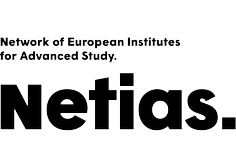Dr. Todd Carmody
Englische Literatur und Amerikanistik
Junior Fellow (VW-Mellon Fellow)
October 2016 - September 2017
CV
Todd Carmody is a literary and cultural historian with research interests in American studies, affect studies, disability and media history, critical race studies, and historicist method. As a Volkswagen Fellow at the Freiburg Institute for Advanced Studies, he will complete a book tentatively titled Racial Handicap: Uplift and Rehabilitation in Postbellum America. Carmody’s research has been supported by the American Council of Learned Societies, the Andrew W. Mellon Foundation, the German Academic Exchange Service, the Social Science Research Council, the American Philosophical Society, and the Center for American Literary Study, among others. After completing his PhD at the University of Pennsylvania, Carmody held postdoctoral appointments at the University of California, Berkeley, the Freie Universität Berlin, and at Harvard University. At Harvard, he is presently a research associate of the Mahindra Humanities Center and a non-residential fellow of the W.E.B. Du Bois Institute.
Publikationen (Auswahl)
-
“In Spite of Handicaps: The Disability History of Racial Uplift.” American Literary History 27:1 (Spring 2015), 56-78.
-
“Missing Paul Robeson in East Berlin: The Spirituals and the Empty Archive.” Cultural Critique 88 (Fall 2014), 1-27.
-
“Rehabilitating Analogy.” J19: The Journal of Nineteenth-Century Americanists, 1:2 (Fall 2013), 431-439.
-
“Try Anything.” Co-authored with Heather Love. Criticism: A Quarterly for Literature and the Arts 50.1 (Winter 2008): 133-146.
FRIAS-Projekt
Racial Handicap: Uplift and Rehabilitation in Postbellum America
This study explores how the rise of rehabilitation – a Progressive movement to integrate people with disabilities into the industrial economy – shaped the contested project of imagining racial progress after Reconstruction, both domestically and on the imperial periphery. The book shows how uplift and rehabilitation were united not only by a shared belief in the redemptive power of labor, but also by intertwining efforts in the fields of law, literature, physiology, policy, and scientific management to represent the nature and value of work as such.





